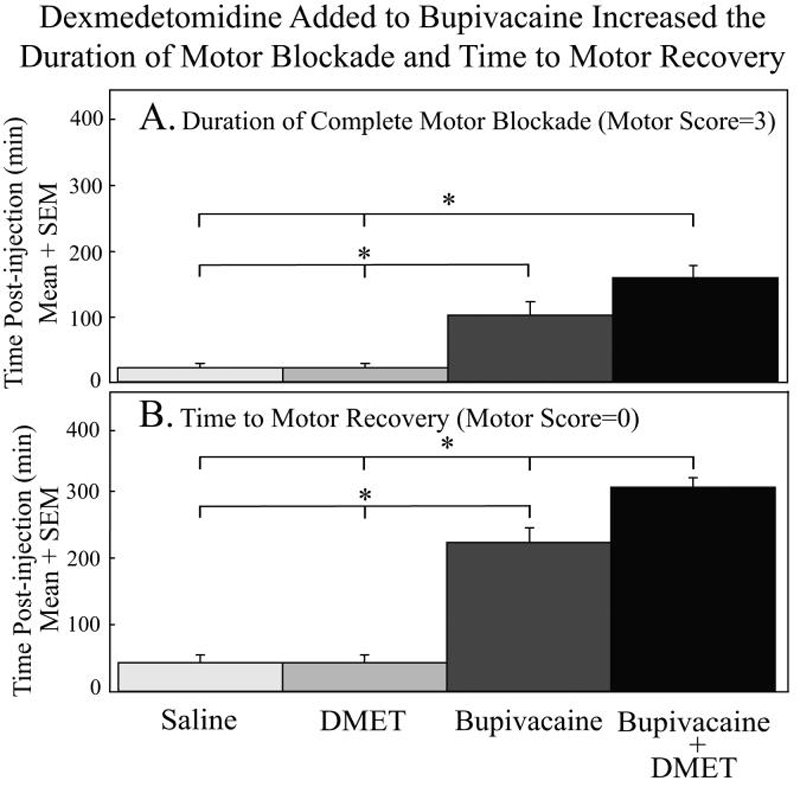Figure 4.

The duration of complete motor blockade (A) was significantly improved when bupivacaine plus dexmedetomidine (158.0 ± 19.1 min) and bupivacaine (101.3 ± 20.7 min) were individually compared with dexmedetomidine (21.4 ± 6.6 min, p < 0.01) and saline (21.4 ± 6.6 min, p < 0.01). The trend towards prolonged complete motor blockade when bupivacaine plus dexmedetomidine was compared to bupivacaine was not significant. The time to complete recovery of normal motor function (B) was significantly longer when bupivacaine plus dexmedetomidine (306.0 ± 14.4 min) was compared with bupivacaine (223.1 ± 22.4 min, p < 0.01), dexmedetomidine (42.9 ± 11.6 min, p < 0.01), and saline (42.9 ± 11.6 min, p < 0.01). The increased time to motor recovery was also significant when bupivacaine alone was compared with dexmedetomidine (p < 0.01) and saline (p < 0.01). Asterisks (*) indicate significant differences. Analyses were completed using repeated measures analysis of variance (ANOVA) followed by Tukey-Kramer multiple comparisons test. The dependent measure for these analyses was time in minutes.
